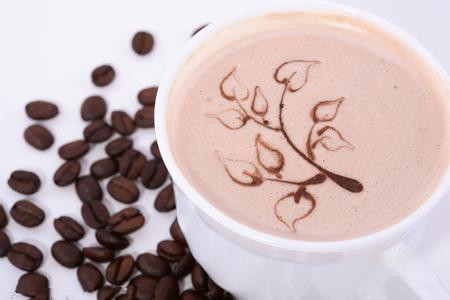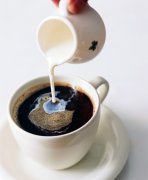Analysis of the five most common coffee sugars

The same cup of black coffee with different sugars will have a very different flavor. Among them, white sugar, square sugar, white granulated sugar, rock sugar and yellow sugar are the most common types.
Cotton white sugar: no impurities, pure taste, low sweetness, easy to dissolve. Square sugar: made from cotton white sugar, the dissolution efficiency is slightly lower than cotton white sugar, but the texture is strong, suitable for blending flavor. White granulated sugar: insoluble, warm and moist, easy to agglomerate. Rock sugar: it is a crystal reproduct of white granulated sugar with the purest taste, which is both an advantage and a disadvantage-some people think that the taste of rock sugar is not rich enough. However, according to the point of view of traditional Chinese medicine, ice sugar flat, into the lung, spleen meridian, Buzhong Yiqi, and stomach moistening lung, moistening lung cough and other effects, for coffee is a very good benefit. Yellow sugar: also known as crude sugar or yellow granulated sugar, is a sugar cane as the raw material of the product, low solubility. The brown sugar is not only darker in color (the longer the cooking time is, the darker the color is), but also has a certain caramel flavor. Yellow sugar has high sweetness and mellowness, because it is rich in substances and has a unique flavor besides sweetness. Some coffee lovers are happy to figure out which specific flavors of coffee are suitable for brown sugar.
Important Notice :
前街咖啡 FrontStreet Coffee has moved to new addredd:
FrontStreet Coffee Address: 315,Donghua East Road,GuangZhou
Tel:020 38364473
- Prev

"Coffee Coffee" picked by Coffee in terms of altitude
As the birthplace of tea culture in China, the idea of good tea from high mountains is deeply rooted in the hearts of the people, so if it is mentioned that high mountains produce good coffee, there should be a lot of people who agree with it. In fact, many low-altitude areas can also produce top-quality coffee. Under the premise of complete air temperature, rainfall, topography and soil, coffee trees especially like the microclimate characteristics of frequent fog and large temperature difference between day and night.
- Next

The basic chemical reactions that take place during coffee roasting
Many thermal and chemical reactions take place during baking: decarbonation, dehydration of quinic acid, subdivision, isomerization, polymerization, and complex sugar reactions (caramelization). The main components of the thermal reaction are monosaccharides and sucrose, chlorogenic acid, free amino acids, and fenugreek amide. Both aravinose and calactose in the polysaccharides are transferred, and the basic vulcanization process includes hydroxylamine.
Related
- Detailed explanation of Jadeite planting Land in Panamanian Jadeite Manor introduction to the grading system of Jadeite competitive bidding, Red bid, Green bid and Rose Summer
- Story of Coffee planting in Brenka region of Costa Rica Stonehenge Manor anaerobic heavy honey treatment of flavor mouth
- What's on the barrel of Blue Mountain Coffee beans?
- Can American coffee also pull flowers? How to use hot American style to pull out a good-looking pattern?
- Can you make a cold extract with coffee beans? What is the right proportion for cold-extracted coffee formula?
- Indonesian PWN Gold Mandrine Coffee Origin Features Flavor How to Chong? Mandolin coffee is American.
- A brief introduction to the flavor characteristics of Brazilian yellow bourbon coffee beans
- What is the effect of different water quality on the flavor of cold-extracted coffee? What kind of water is best for brewing coffee?
- Why do you think of Rose Summer whenever you mention Panamanian coffee?
- Introduction to the characteristics of authentic blue mountain coffee bean producing areas? What is the CIB Coffee Authority in Jamaica?

